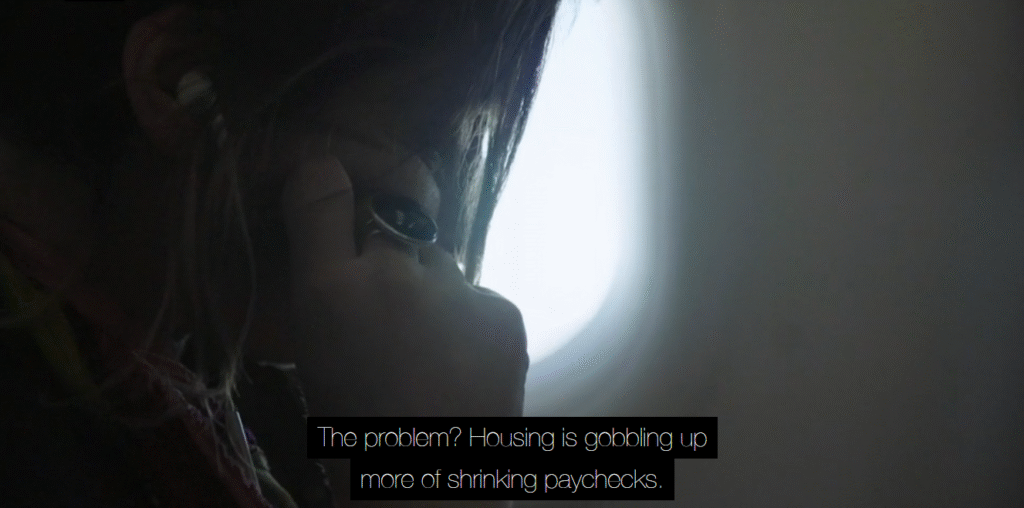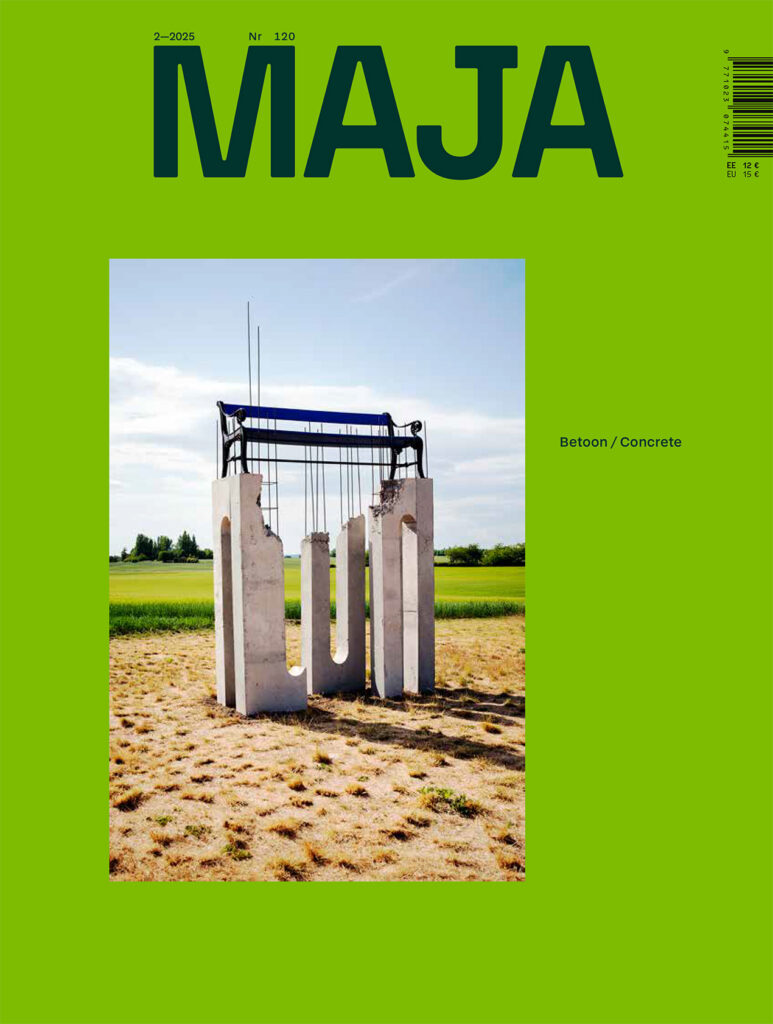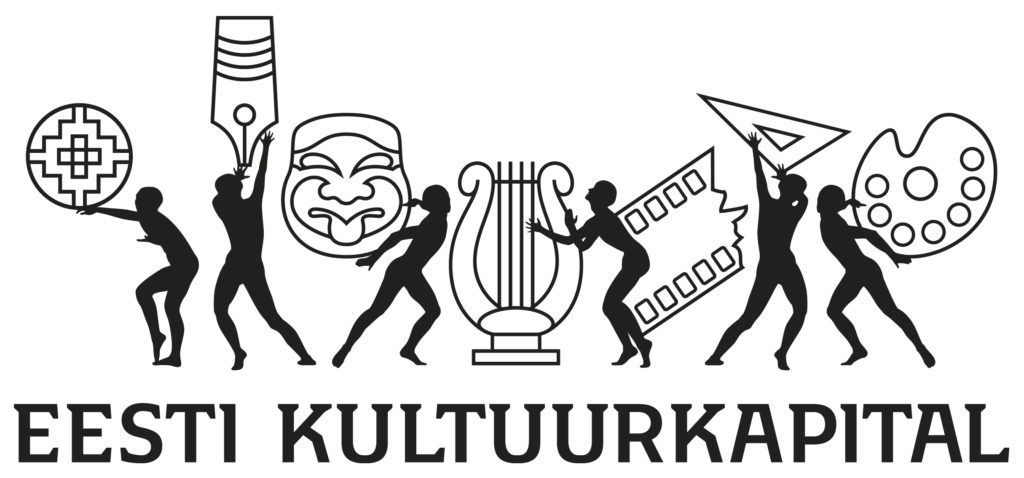Pippi I
‘„Well now, Pippi, how much do you think eight and four are?“
„Oh, about sixty-seven,“ hazarded Pippi.
„Of course not,“ said the teacher. „Eight and four are twelve.“
„Well now, really, my dear little woman,“ said Pippi, „that is carrying things too far. You just said that seven and five are twelve.“’
Fatigue
Is there a topic more tiresome than that of pension funds? The methods used for drawing attention to them only make matters worse. All these salespeople pestering you in the shopping malls or on the phone… Yuck! Annoying. Some weeks ago I got a call from a pension fund lady who tried to convince me that I should return one of my pillars to their bank. But how do these pillars grow anyway? Where should you move the sum that you have collected so that it could at the very least keep up with the inflation? And what role are these savings of mine currently playing in world affairs?
The Push
In the documentary film The Push, the UN Special Rapporteur on the Right to Adequate Housing Leilani Farha looks into how the affordability of housing (a fundamental human right) is rapidly decreasing in the (large) cities of the world. In the film, Farha tries to dig into the layered inner workings of the financial world and eventually comes up with a rather fundamental question—where do large investment firms such as Blackstone, the largest asset manager in the world, get their money from? One of the findings of the film is that globally, vast sums of money are kept namely in pension funds, which per contract need to be grown even larger.
The pension system in Estonia rests on three pillars—the state pension (I pillar), mandatory funded pension (II pillar) and supplementary funded pension (III pillar).
It is not unthinkable that the first of the three will fully disappear as the population grows older and there will be less and less working-age people. Thus, pooling money into the two other pillars—i.e., investment funds—is also incentivised on the national level. According to the pension centre, the purpose of the pension system is to help people maintain their current standard of living and monthly income when they retire.
Maintaining your current standard of living
Pension funds are a sub-class of investment funds. The purpose of a fund manager’s work is to grow the value of the assets. Most funds also promise to invest ethically and sustainably. And yet, we are left asking—how is this guaranteed? What should we even consider ethical? Is it ethical to invest in wind power if the planned wind-farm interrupts a bird migration route? Is it ethical to invest in the production of electric vehicles if mining the lithium that is necessary for their batteries comes with such costs and effects that we know of? Is it ethical to invest in rental apartments as an asset class with a stable return if housing affordability keeps decreasing and we keep being reminded of the quote (who is the author I cannot recall): ’If your waiter in a cafe cannot afford to live 15 minutes away from her workplace, then we are not talking about a city but a theme park’?
The fact that buzzwords such as ‘sustainable’ or ‘ethical’ are nebulous and not easily defined is admitted by the funds themselves.
EfTEN Capital is the largest real estate funds manager in the Baltics. An excerpt from their website:
‘We acknowledge that real-estate carries potential negative effects towards global sustainability goals, and we believe this impact can be managed. Setting sustainability goals has become increasingly important for investors but has not always been explicit. We manage funds that have been established at different times and have different investment mandates and ESG ambitions.
Therefore, in the context of SFDR (2019/2088 EU) we are unable to formally confirm that we consider adverse impacts of investment decisions on sustainability for all our funds.
This is due to two reasons: i) quantifying adverse effects at this stage is difficult due to shortage of relevant sustainability data; ii) the regulation package for management of adverse impacts is very new and best practice is yet to develop.’
In the beginning of 2023, financial newspaper Äripäev wrote that although investing in real estate has so far been popular mainly among Western European pension funds, it is now a growing trend also in Estonia. In the article, real estate expert Tõnu Toompark also points out that approximately third of Tallinn’s 220,000 housing units are rentals, but in the future, their share is likely to grow, for homes are becoming less available.
LHV with its pension funds states its orientation toward real estate most explicitly. As of 2023, it owned 409 rental apartments in Tallinn and Riga, among other real estate investments. Although the share of rental apartments can be predicted to increase, LHV’s Head of Real Estate Investments Rait Riim does not expect a massive and market-altering influx of institutional investors to the Estonian market. An excerpt from Äripäev:
‘According to him, the geopolitical situation is such that large international funds will not be coming here in the next 5 to 10 years. On the other hand, this does not present much of an advantage to local investors, because getting detail plans confirmed and building new apartment buildings is extremely time-consuming. „It takes decades before we start feeling the influence of large investors on the local apartment market,“ Riim added.’
A brief discussion with Riim about the effects and the future of pension and other real estate funds suggests that the role of local investors also takes local specificities into account. Articles about Blackstone’s feats and the aforementioned film The Push highlight the dismantling of existing (municipal) rental markets in, say, Berlin, Copenhagen or Stockholm, whereas in Estonia, where the public sector’s role in housing economy has been rapidly receding, the arrival of institutional landlords manifests itself in building up (the market) instead. The middle-class rental buildings managed by LHV funds also stand out for their exemplary sustainability labels.
‘[..] EfTEN was founded during previous financial crisis and the recession driven by coronavirus provides a good timing for entering a new business segment. We are planning so-called bulk purchases during upcoming low tide in the construction market, which means that the fund will purchase entire residential buildings, not individual apartments
[..]
We see a good potential in the residential rental property market because compared to Scandinavia it’s still in the very beginning and not yet institutionalised.’
Viljar Arakas, CEO of EfTEN Capital
Collecting
The drive to secure one’s own future—i.e., personal fear of old age and death—plays an elusive yet very real role in the transformations, fairnesses and unfairnesses in the world also today. Although due to the geopolitically uneasy location of Estonia and the other Baltic states, we are in some sense protected from the impact of global financial and real estate conglomerates, there are cities in the world where pension funds intertwined with other financial instruments are considerable players in real estate and housing markets, thus affecting also urban development and (wealth-based) segregation of the population. Here, where there is practically no such thing as a housing policy, they are still said to have a largely extraneous role.
And yet, a housing economy managed by pension funds and other financial actors seems to involve a certain contradiction. As a pension collector and thus investor (indeed, everyone can be one…), I find it beneficial if the value of assets increases and rents go up. As someone who simply needs a place to live, I do not find it necessary nor beneficial.
Confessions
- Formally, I am a member of all the more and less recommended pension funds.
- Continuing at the current pace, and spending my days and hours and minutes on things like this article, the picture that I will see there even forty years down the line is… relatively bleak.
- However, some of my euros are currently growing in a fund that also promises the following.
An excerpt from Swedbank website
‘[..] gradual reduction of CO2 intensity, making environment-related investments and increasing the share of green bonds in the portfolio (if eligible); and compliance with international conventions and reducing involvement in controversial weapons.
[..]
The aim of the fund is to promote environmental and social qualities across the whole portfolio without the goal of making sustainable investments.’
‘[R]educing involvement in controversial weapons’.
Nice.
What are considered controversial weapons? I would have thought that all weapons are… controversial. Or, let us say, (hopefully) the last resort of solving controversies. By and large, however, ‘controversial weapons’ are said to be infantry mines, cluster munitions, and chemical, biological and nuclear weapons. According to the Swiss Association for Responsible Investments, however, the last item on the list—i.e., nuclear weapons—is controversial only if their development/production/storage takes place outside of five nuclear states. Investing in nuclear weapons is not controversial if the investment is directed to the United States, Russia (the successor state of the USSR), the United Kingdom, France or China.
It seems that any choice not leading to the world becoming a hotter and more callous place is pretty much impossible to make, given the pattern of ‘That’s simply how the world works’. Perhaps we could even ask together with Andri Snær Magnason, the author of On Time and Water—is our system legal? Is it legitimate to normalise so many things that certainly have adverse consequences? I am collecting money in pension funds in order to maintain my ‘current standard of living’. Should flight trips, oil plants and all sorts of amenities that we are enjoying on this side of the world as if they were human rights even be legal? Should the fact that the impact of Baltic funds is vanishingly small compared to the world’s largest ones in Japan, Norway, the United States, South Korea or the Netherlands strike us as a comforting exculpation?
Pippi II
‘The teacher decided there was no point in trying to teach Pippi any more arithmetic. She began to ask the other children the arithmetic questions.
„Can Tommy answer this one?“ she asked. „If Lisa has seven apples and Axel has nine apples, how many apples do they have together?“
„Yes, you tell, Tommy,“ Pippi interrupted, „and tell me too, if Lisa gets a stomach-ache and Axel gets more stomach-ache, whose fault is it and where did they get hold of the apples in the first place?“’
MADLI KALJUSTE is a freelance architect who is exploring life and matters through houses. Madli is a new editor of MAJA.
The photos accompanying the text are from Ingrid Allik’s exhibition ´Kas on linnukesel muret´ [Does Birdie Ever Worry].
The exhibition was inspired by the symposium on alternative firing processes organised in Gdańsk, Poland. The tiny birds were reproduced with Kris Lemsalu’s plaster mould and intended as samples; they wear ‘coats’ that were made with special technologies, are situated in various ceramic contexts and accompanied by explanatory sentences.
PHOTOS by Mattias Allik.
HEADER: Ingrid Allik, The bird sees a message on the stone.
PUBLISHED: MAJA 2-2024 (116) with main topic OLD AGE
1 Pippi Longstocking, Astrid Lindgren, English translation by Florence Lamborn
2 See more about the movie pushthefilm.com
3 Blackstone is a private equity firm that also manages pension and insurance funds. Just like many other larger contemporary investment management firms, Blackstone began making large investments in the housing market immediately after the financial crisis of 2008
4 „LHV ja Kantar Emori uuring: üürikorterid võistlevad investeeringuna aktsiatega“, [‘LHV and Kantar Emor Survey: Rental Apartments Qua Investments Compete with Stocks’], Investor, 27 April 2023
5 Pille Ivask, „Lääne mood jõudis Eestisse: pensionifondid kühveldavad raha kinnisvaraturule“, [‘Western Trends Have Reached Estonia: Pension Funds Shovel Money Into the Real Estate Market’], Äripäev, 17 January 2023
6 Hettie O’Brien, „The Blackstone rebellion: how one country took on the world’s biggest commercial landlord“, The Guardian, 29 September 2022
7 „LHV pensionifondide Uus-Mustamäe üürimajad said Baltikumis kõrgeima BREEAM rohemärgise“, [‘LHV Pension Fund-Owned Rental Buildings in Uus-Mustamäe Earned the Highest BREEAM Green Label in the Baltics’], LHV Investor, 21 March 2024
8 Annika Ole-Holm, ‘EfTEN enters the residential rental property market’, EfTEN Living Blog, 7 September 2020, https://eftenliving.ee/en/ eften-enters-the-residential-rental-property-market/
9 Maarja Merivoo-Parro, „Andri Snær Magnason: meid ei tuleks karmi teaduse eest säästa“, [‘Andri Snær Magnason: We Should Not Be Spared of the Hard Truths of Science’], ERR, 3 July 2023












